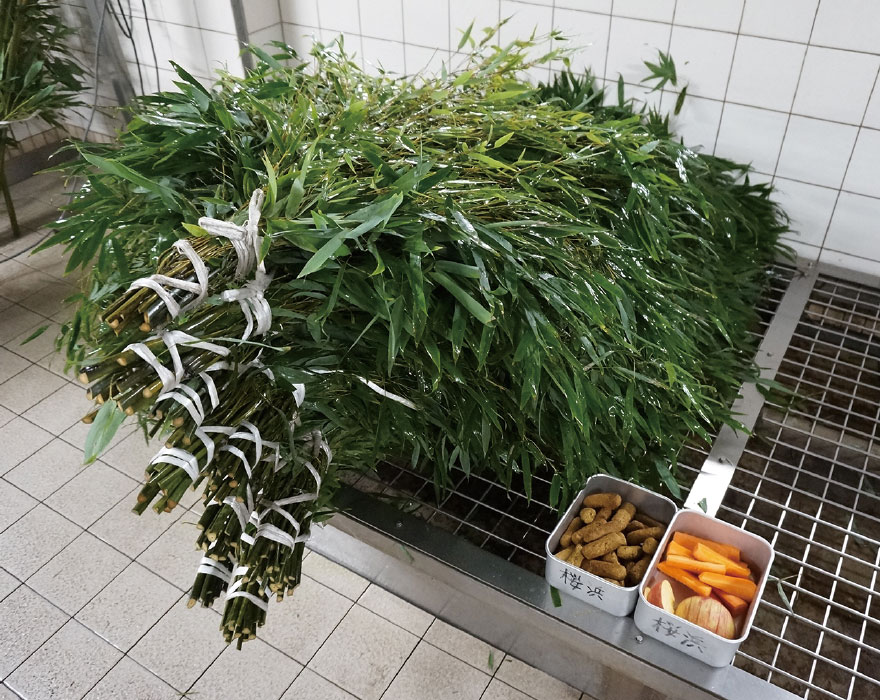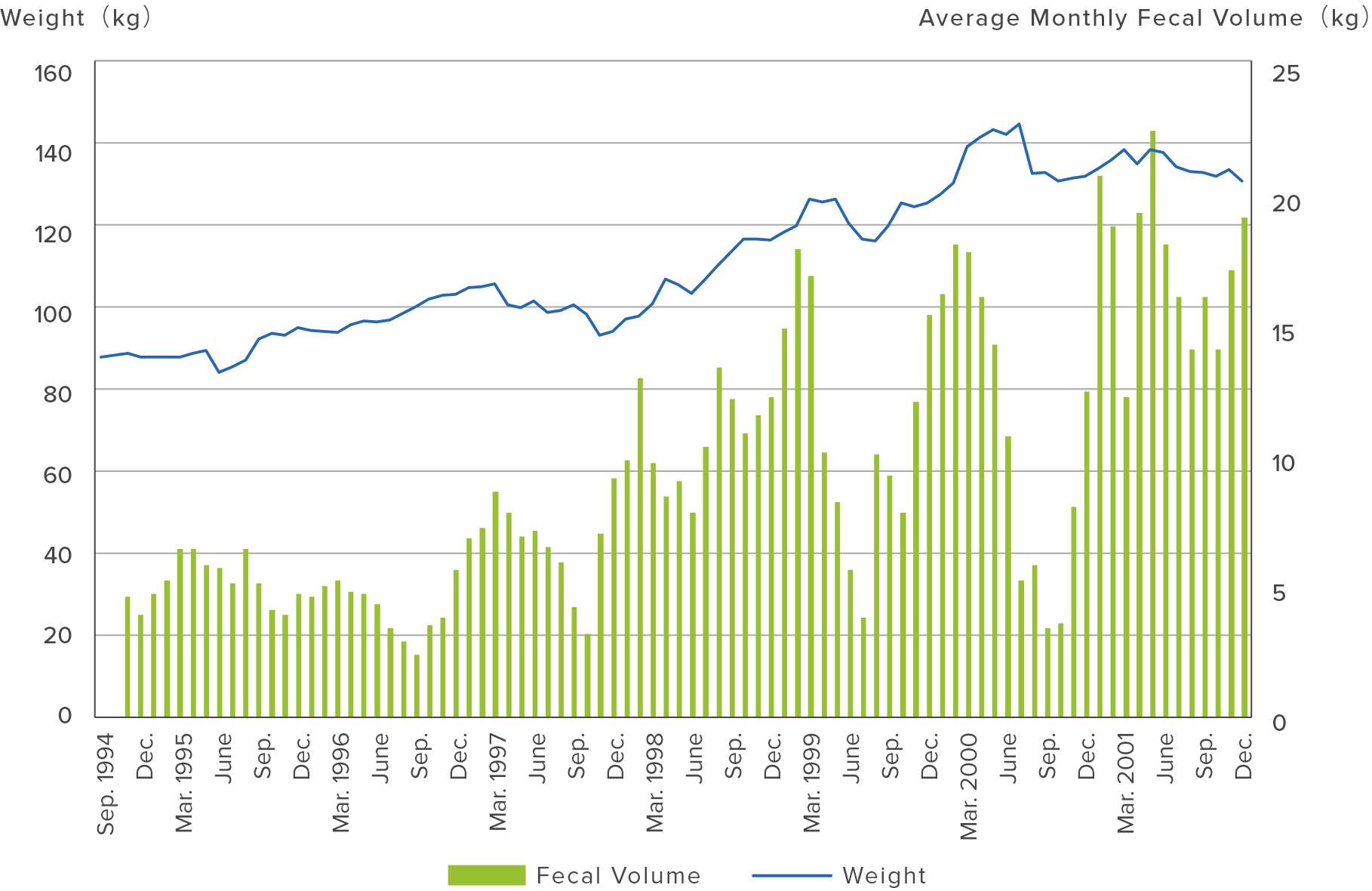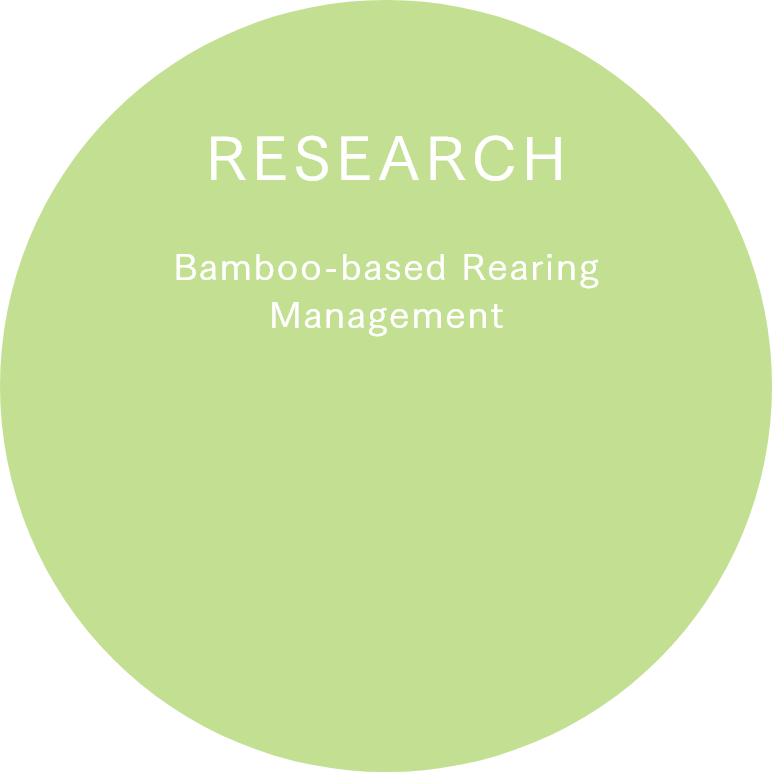

Part of our rearing management efforts
In 1994, the nutrient-rich diet provided each day to the pandas included 1.3 kilograms of special panda dumplings made from corn powder, wheat bran, horse meat, eggs, and other ingredients, as well as one kilogram of apples, and one liter of cow's milk. Perhaps as a result of this, the pandas only ate two to five kilograms of bamboo, what should have been their main food source, each day. When the male panda Eimei arrived, his lack of appetite, frequent mucus discharge, and diarrhea led to a diagnosis of chronic gastritis, but despite the administration of corresponding medicine, no remarkable improvements were observed. Weighing 88 kilograms upon arrival, over the next year Eimei showed no notable weight increase, despite the fact that he should have been growing at that age. This made his healthy growth an urgent issue for us.
-

Former nutrient-rich diet (for pandas 2 years of age)
-

Current bamboo-centric diet (for pandas 2 years of age)
Eimei's Weight and Average Monthly Fecal Volume

Through consultation with the Chengdu Research Base of Giant Panda Breeding and Kitasato University where we were carrying out joint project for the conservation of giant pandas on digestion, we shifted from a high-sugar and high-fat diet to a high-fiber diet with more bamboo. Beginning in 1998, we saw a stable increase in weight, eventually reaching around 130 kilograms. In 1998 carrots were added to the diet, and in 2001 leaf-eater biscuits (Mazuri® Primate Browse Biscuits) were incorporated as well. While tortoise-shell bamboo was originally used as the primary source of bamboo, since palatability for this type drops in summer, numerous other types, including Chinese temple bamboo, Simon cane-bamboo, arrow bamboo, dwarf bamboo, and Chinese dwarf bamboo were also prepared to ensure that bamboo consumption would not fall. Since 2009, we stopped feeding panda milk to cubs 2 years of age and older, and our adult pandas rarely suffered from digestive diseases and were kept in good health under our care.
